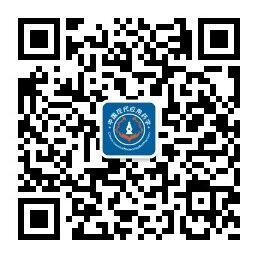| 引用本文: | 李海刚,蒋静,郑秀文,刁志超,杨美慧,冯丹阳,秦肖庆.芍药苷/O-丁酰壳聚糖纳米颗粒的制备及透皮性能研究[J].中国现代应用药学,2025,42(7):51-57. |
| Lihaigang,Jiangjing,Zhengxiuwen,Diaozhichao,yangmeihui,fengdanyang,qinxiaoqing.Preparation and Transdermal Properties of Paeoniflorin/O-Butyryl chitosan Nanoparticles[J].Chin J Mod Appl Pharm(中国现代应用药学),2025,42(7):51-57. |
|
| 摘要: |
| 摘要:目的 制备芍药苷/O-丁酰壳聚糖纳米颗粒并考察体外透皮性能。方法 采用Box-Behnken试验设计优化芍药苷/O-丁酰壳聚糖纳米颗粒处方,扫描电镜观测芍药苷/O-丁酰壳聚糖纳米颗粒的形貌特征,激光粒度仪测定芍药苷/O-丁酰壳聚糖纳米颗粒的粒径分布及zeta电位;HPLC法测定纳米颗粒体外释放度,研究纳米颗粒体外释药动力学;采用改良Franz扩散池法研究芍药苷/O-丁酰壳聚糖纳米颗粒体外透皮性能,并与芍药苷溶液进行比较。结果 芍药苷/O-丁酰壳聚糖纳米颗粒为球形颗粒,粒径为131.3±11.8 nm,zeta电位为40.5±2.9 mv。芍药苷/O-丁酰壳聚糖纳米颗粒体外释药机制符合零级释药模型。芍药苷/O-丁酰壳聚糖纳米颗粒与芍药苷溶液的稳态渗透通量分别为15.03μg·cm-2·h-1和9.83μg·cm-2·h-1,渗透系数分别为15.22×10-3cm·h-1和9.70×10-3cm·h-1,8h皮肤滞留量分别为215.40μg·cm-2和29.34μg·cm-2。结论 芍药苷/O-丁酰壳聚糖纳米颗粒粒径分布均匀,表面荷正电。芍药苷/O-丁酰壳聚糖纳米颗粒提高了芍药苷的体外皮肤渗透量及皮肤滞留量,作为芍药苷皮肤给药载体具有较大潜力。 |
| 关键词: 芍药苷 O-丁酰壳聚糖纳米颗粒 透皮性能 释药动力学 药物皮肤滞留量 |
| DOI: |
| 分类号: |
| 基金项目: |
|
| Preparation and Transdermal Properties of Paeoniflorin/O-Butyryl chitosan Nanoparticles |
|
Lihaigang1, Jiangjing1, Zhengxiuwen1, Diaozhichao2, yangmeihui3, fengdanyang3, qinxiaoqing3
|
|
1.Linyi university;2.shandong university;3.linyi university
|
| Abstract: |
| ABSTRACT: OBJECTIVE To prepare paeoniflorin/O-Butyryl chitosan nanoparticles and investigate their transdermal properties. METHODS Optimization of the formulation of Paeoniflorin/O-butyryl chitosan nanoparticles was conducted using the Box-Behnken experimental design. Scanning electron microscopy was employed to observe the morphological characteristics of Paeoniflorin/O-butyryl chitosan nanoparticles, while laser diffraction particle sizing and zeta potential analysis were employed to determine their particle size distribution and zeta potential. The release profile of the nanoparticles was determined using high-performance liquid chromatography (HPLC), and the in vitro release kinetics were investigated. The in vitro transdermal performance of Paeoniflorin/O-butyryl chitosan nanoparticles was studied using an improved Franz diffusion cell method and compared with Paeoniflorin solution. RESULTS Paeoniflorin/O-butyryl chitosan nanoparticles were found to be spherical with a particle size of 131.3±11.8 nm and a zeta potential of 40.5±2.9 mV. The release mechanism of Paeoniflorin/O-butyryl chitosan nanoparticles in vitro followed a zero-order release model. The steady-state permeation flux of Paeoniflorin/O-butyryl chitosan nanoparticles and Paeoniflorin solution were 15.03 μg·cm-2·h-1 and 9.83 μg·cm-2·h-1, respectively. The permeation coefficients were 15.22 × 10-3 cm·h-1 and 9.70 × 10-3 cm·h-1, and the skin retention amounts at 8 hours were 215.40 μg·cm-2 and 29.34 μg·cm-2, respectively. CONCLUSION Paeoniflorin/O-butyryl chitosan nanoparticles exhibited a uniform particle size distribution and positively charged surface. Paeoniflorin/O-butyryl chitosan nanoparticles enhanced the in vitro skin permeation and retention of Paeoniflorin, indicating their potential as a delivery vehicle for Paeoniflorin in skin administration. |
| Key words: paeoniflorin chitosan nanoparticles transdermal properties release kinetics drug skin retention |
